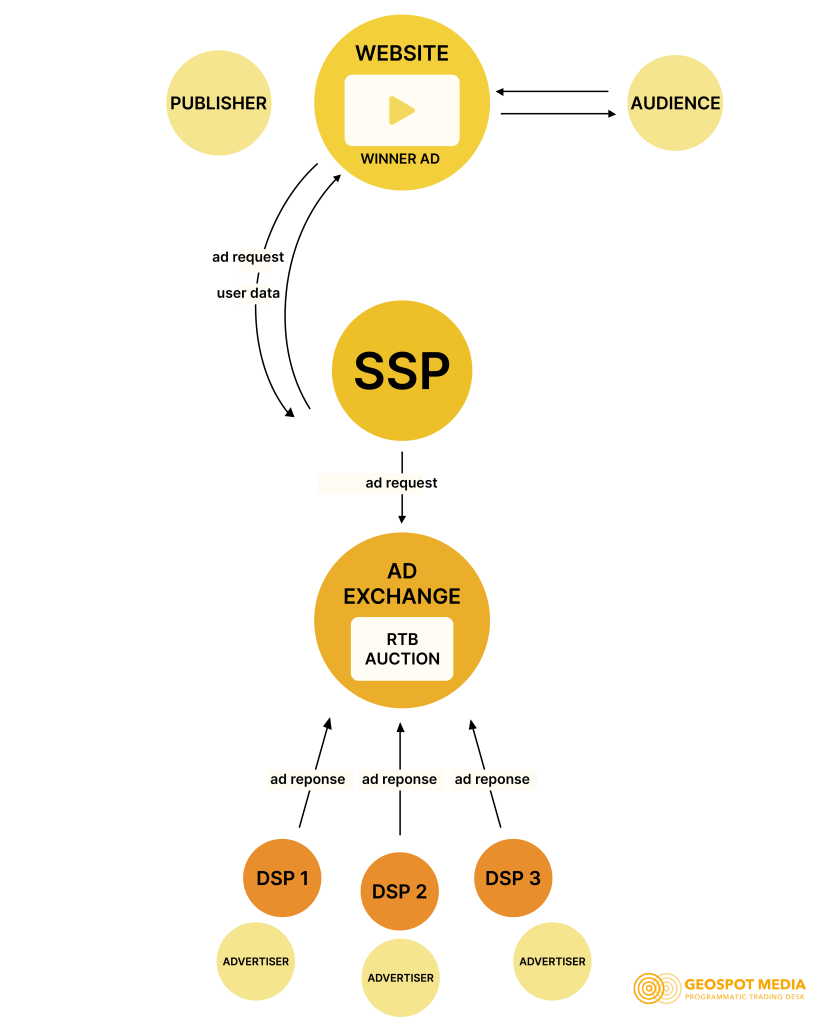How to Master Programmatic Advertising
By 2025, global programmatic advertising expenditure will probably cross $600 billion. These figures demonstrate amazing increase, however in 2023 advertisers lost 22% of their paid advertising budget to fraud.
These numbers clearly show that programmatic advertising keeps becoming more important even if it is riskier and more complex. Comparatively to last year, the increase in false advertising generation has been 1,000%.
Our whole programmatic advertising guide tackles these issues. The material leads you through starting your first campaign successfully and clarifies programmatic advertising principles.
When done right, programmatic ads provide conversion rates four times greater than more conventional advertising techniques. This article demonstrates you how to avoid typical mistakes made by novice advertisers and yet produce comparable results.
Ready to master programmatic advertising? Let’s investigate!
Analyzing the Programmatic Advertising Scene
Programmatic advertising automates digital marketing space purchases and sales using algorithmic software. While programmatic buying makes quick decisions regarding ad placement using real data, traditional approaches depended on hand pitches, tenders, and negotiations.
Simply put, programmatic advertising is
Programmatic advertising acts as your smart assistant purchasing digital ad space on your behalf. Running effectively, the procedure takes just milliseconds. Every time a visitor visits a website, the platform of a publisher puts the ad space for auction. The systems of the marketers examine user information to identify the most relevant adverts. The highest bidder gets their advertisement right in view for the visitor.
Three significant advantages come from this automated method:
- Efficiency: Marketers focus more on strategy instead of manual tasks.
- Precision targeting: Allows ads to locate particular groups depending on their objectives.
- Scalability: Campaigns run on multiple platforms at once.
Key players are DSPs, SSPs, Independent trading desks and Ad exchanges
The programmatic ecosystem combines components that work together:

Demand-Side Platforms (DSPs) serve as the advertisers’ toolkit to buy ad inventory from networks of all sizes. DSPs make the buying process automatic and utilize data to reach the right users at the perfect moment.
Supply-Side Platforms (SSPs) help publishers manage and sell their ad inventory. Publishers’ SSPs optimize their ad space offerings to potential buyers, which maximizes demand and ensures optimal pricing.
Ad Exchanges function as digital marketplaces where ad space trades happen between advertisers and publishers live. The automated auctions need no direct negotiation, so transactions happen transparently.
Independent Trading Desks specialize in programmatic ad buying without ties to agency holding groups. These companies expert teams focuses purely on programmatic advertising, which leads to smarter data analysis and better decisions.
The ecosystem creates perfect harmony – DSPs help advertisers find impressions at great prices, while SSPs help publishers sell impressions at premium rates.
Selecting Correct Programmatic Platforms for Your Requirements
Your campaign’s success can be made or broken by the appropriate programmatic platform. Your platform choice will influence performance results, cost economy, and targeted precision.

Analyzing popular demand-side models
There are various trustworthy demand-side platforms (DSPs) with special advantages in the industry. With its multi-channel solutions including native, display, and video ads, Stack Adapt distinguishes itself. The Trade Desk provides ad buyers with a self-service cloud platform to design and maximize campaigns for devices of different kinds of formats. Advanced targeting and reporting tools in Google’s Display & Video 360 simplify ad buying. For tailored advertising based on shopping patterns, Amazon DSP lets advertisers access to first-hand data.
Platform assessment should center on:
- Simple interface and navigation
- Channels and device inventory choices
- Focusing on qualities of targeting accuracy
- Features related to brand safety and fraud protection
- Transparency in privacy compliance
Managed services against self-service
Self-service programs let you directly oversee campaigns. If someone in your core team understands DSPs, audience targeting, conversion tracking, and budget planning, this works well. Better transparency, live optimization, and less costs are the advantages.
Managed services let a third party execute your programmatic marketing. If you require specialist knowledge, lack internal skills, or would rather concentrate on core business instead of ad management, this suits nicely. Although they cost more, managed services often offer optimization knowledge that enhances your advertising return on investment.
Financial factors influencing the choice of platform
Platform fees vary greatly. Usually on top of ad spend, DSP costs fall between 10 and 15%. Besides probable data management platform expenses, you will additionally pay for SSP and exchange fees.
Budget-friendly approaches suggest using fewer DSPs to cut duplicate expenses. Many analysts advise this budget split:
- Open Exchange (30–50%): Public auctions offer broad, cost-effective ad reach with less control.
- Private Markets (20–40%): Exclusive auctions provide premium inventory with better quality and transparency.
- Programmatic Guaranteed (10–25%): Fixed-price deals ensure reserved, high-value ad placements.
- Preferential Agreements (5–15%): Priority access to inventory at negotiated rates without guarantees.
Integration powers using your current tools
For data sharing between systems, the constant connection of your marketing stack counts. Search for sites that fit your CRMs, email marketing tools, content management systems. These relationships enable you to better grasp your audience, so enhancing targeting, personalizing, and marketing success.
Creating Strategic Targeting Plans
The life-blood of successful programmatic advertising campaigns lies in targeting the right audience. After you select your platform, you need to decide who sees your ads and when.

Locating your perfect audience segments
There are several groupings of your possible clients who have similar characteristics. This makes your message appealing to every particular audience rather powerfully. Your audience can be segmented mostly in four ways:
- Demographic segmentation: Groups consumers according to quantifiable criteria such age, gender, income, and degree of education.
- Behavioral segmentation: Examines online behavior including content interaction, purchasing history, and website visits.
- Psychographic segmentation: Groups based on values, interests, personalities, and lifestyles.
- Geographic segmentation: Divides users depending on location from country level down to postal code.
Get first-party data from your CRM system, app, or website to begin creating successful segments. Examining this information will help you to find trends in the priorities of your audience. Then use these segments in your programmatic platform to deliver focused messages over digital media of all kinds.
Juggling reach and accuracy
Finding the right mix between targeting accuracy and audience size can be tricky. Advertisers must weigh this carefully when planning campaigns.
Very specialized targeting can provide smaller but more exact audience segments. Still, these little pieces might restrict the scope and possible impact of your campaign. Targeting too narrowly, according to industry experts, could increase costs while lowering opportunities to attract new business.
Usually, a tiered strategy is the ideal one. Spend most of your money on your most exact categories; then expand with lookalike audiences who share traits with your best customers. This increases your relevance even as you attract more potential clients.
Targeting strategies with privacy compliance
As privacy regulations get stronger and third-party cookies disappear, the digital world requires fresh targeting tactics. Contextual targeting shows ads based on content relevance instead of user data, which protects privacy while staying effective.
First-party data from your website users and consumers presents a privacy-friendly targeting choice. Tell users how you gather and apply their data, therefore you will also be honest about your data procedures.
Developing audience identities devoid of personal knowledge also becomes successful. By stressing broad trends instead of specific facts, you can create privacy-compliant sections. Without masses of personal data, location-based targeting also offers relevance.
The programmed universe keeps turning toward more private approaches. Maintaining compliance and effectiveness of your efforts depends on keeping up with new targeting technologies and legislative developments.
Avoiding Typical Beginning Errors
Your programmatic advertising systems could fail even with their sophistication when little errors compromise your efforts. Let’s discuss the typical mistakes novices should avoid to maximize their return on ad expenditure.

Establishing unreasonable demands
Since they set unrealistic expectations at the time they launch their small businesses, small business owners can feel let down with their digital marketing results. It is not like magic with quick results; you will need six to twelve months to see how your approach impacts your company. Beyond the cost of ad impressions, your programmatic advertising calls for certain technological, data management, and creative development investments.
Ignoring campaign frequency guidelines
By regulating user view of your adverts, frequency limiting helps maximize ad impressions. The incorrect frequency settings squander your money on repeated exposures that fail or miss opportunities to seize new prospects. Different frequency methods are needed by each consumer depending on their buying experience stage, so single frequency limitations have little effect. As consumers pass the funnel, increasing frequency and bidding helps you to enhance your conversion rates.
Neglecting viewability statistics
Ads create zero value when nobody sees them. The industry defines viewability as having at least 50% of an ad’s pixels visible for one continuous second for display ads. These metrics help demand partners make CPM decisions when they target specific inventory that matches certain view rate criteria.
Neglect of creative optimization
Dynamic creative optimization (DCO) creates customized advertisements based on user behavior and priorities. Without DCO, you miss chances to test various creative elements—headlines, visuals, and calls-to-action—and find the best combinations. This technology makes creative optimization quick and simple.
Insufficient pre-scaling testing
Using 10–20% of your budget for experimentation will help you to stay competitive. Your original campaigns cannot benefit from the “set and forget” strategy. Instead of large modifications, successful testing requires little, regular adjustments depending on present data.
In summary
For modern marketers, programmatic advertising has evolved into a transforming tool. It offers unrivaled accuracy and targeting choices. Success stories and real-life examples show how companies using programmatic tactics the correct approach produce incredible outcomes.
Programmatic advertising success depends on choosing the correct platform, developing exact targeting plans and routinely optimizing campaigns. Businesses of all kinds and sizes can benefit greatly from programmatic advertising, as shown by companies like Whistler Medical Esthetics, which also help to reduce general costs.
These are the main components required for programming success:
- Choose platforms within your budget and need range.
- Using accurate data, create segments of a targeted audience.
- See campaign performance in its whole before scaling.
- Track viewability statistics and change frequency ranges.
- Keep refining your creative aspects.
Programmatic advertising’s digital environment will always be shifting as new technology develops and privacy laws change. The fundamental ideas we covered will enable you to design effective campaigns yielding outcomes. Starting small, testing effectively, and growing step-by-step is your best course of action; this approach is most suited for new programmatic advertisers.
Typical Questions
Q 1. What is programmatic advertising, and how does it function?
Programmatic advertising is a digital ad space, buying and selling automated approach driven by algorithms. The ad area of a website is auctioned when a user visits it; advertisers’ algorithms examine user data to identify pertinent adverts. The highest bidder wins; their advertisement shows up right away to the visitor.
Q 2. The programmatic advertising ecosystem consists of what main elements?
Demand-Side Platforms (DSPs) used by advertisers to purchase ad inventory, Supply-Side Platforms (SSPs) used by publishers to sell ad space, Ad Exchanges enabling transactions between buyers and sellers, and Independent Trading Desks specialized in programmatic ad buying comprise the main components.
Q 3. For my company, which programmatic platform best fits us?
Think about things like the UI of the platform, the options for inventory, targeting capabilities, brand safety elements, and connection with your current tools. Also consider whether your team’s resources and knowledge call for a managed or self-service model.
Q 4. Which are some good targeting techniques for programmatic advertising?
Good plans call for audience segmentation depending on region, behavior, psychographics, and demographics. In your aiming technique, you should strike a mix between reach and accuracy. As third-party cookies phase out, also take privacy-compliant ideas like contextual targeting and employing first-party data under consideration.
Q 5. In programmatic advertising, what typical errors should novices steer clear?
Typical mistakes include unreasonable expectations, neglect of campaign frequency settings, viewability measures, poor creative optimization, and insufficient testing before to scale-back. Starting small, test extensively, and always optimizing depending on performance data is absolutely vital.




Post Comment